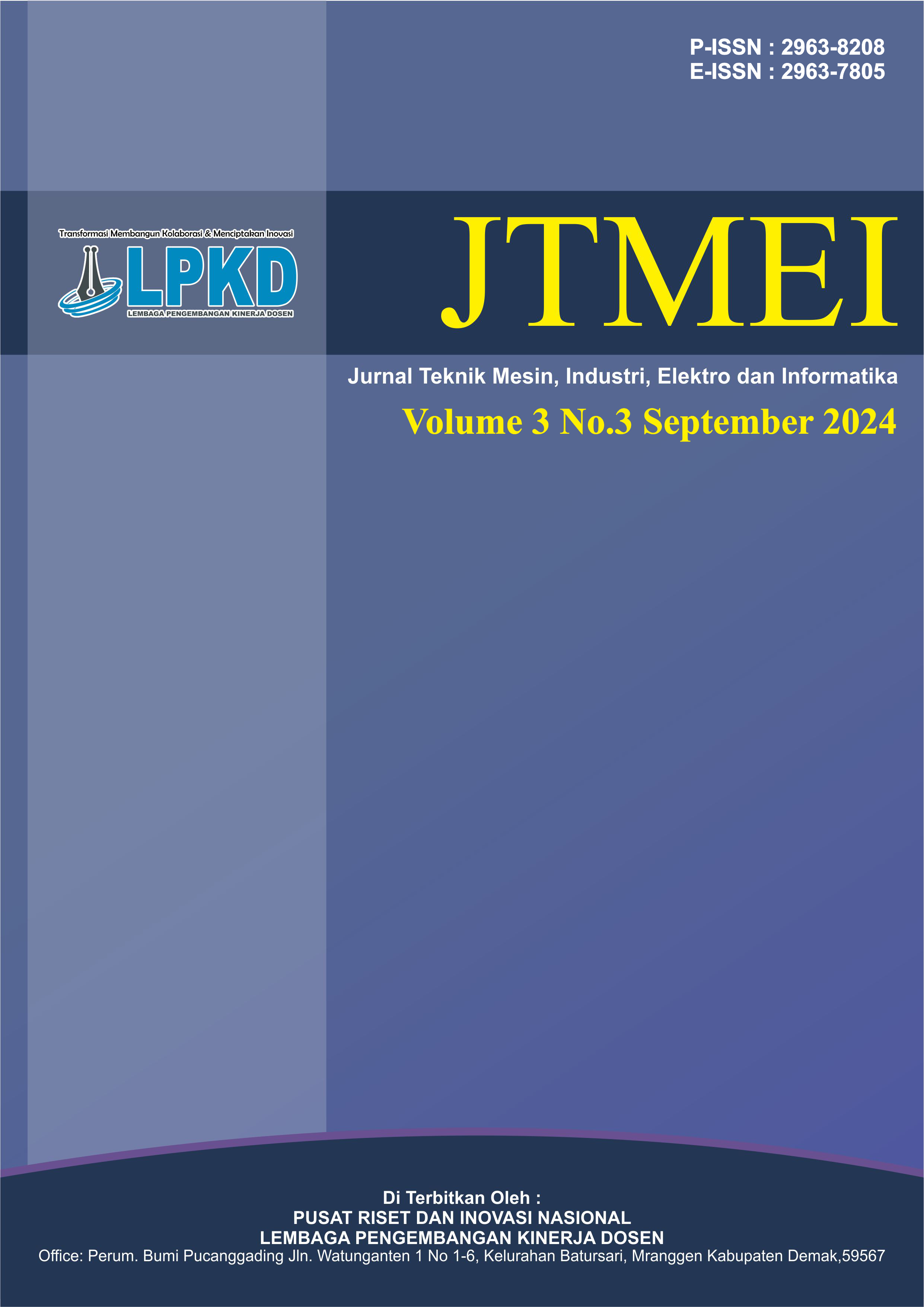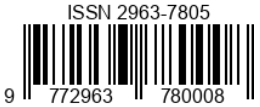Perbandingan Waktu Pencetakan dan Penggunaan Material pada Program Slicer 3d Print dengan Variasi Parameter Support Normal dan Tree
DOI:
https://doi.org/10.55606/jtmei.v3i3.4972Keywords:
3D print, normal, slicer, support, treeAbstract
3D printing technology has revolutionized the way objects are designed and manufactured. One of the 3D printing methods is Fused Deposition Modeling (FDM). In the FDM process, thermoplastic filament is melted and extruded through a nozzle to build objects. An important aspect of FDM 3D printing is the use of support structures. Supports are necessary to support object parts that have overhangs or other complex geometries. There are two types of support structures, namely normal supports and tree supports. The selection of support type can affect printing time, material usage, and print quality. Slicer programs also play an important role in determining support parameters. This research aims to compare printing time and material usage on normal and tree support parameters with variations in slicer programs (Cura and Creality Slicer). This research uses a comparative experimental method. The independent variables in this research are support type (normal and tree), and the slicer programs used (Cura version 5.9 and Creality Slicer 6.0). The dependent variables in this research are printing time and material usage. In terms of print time, Creality software has a consistent print time, both for normal support and tree support. By comparing all parameters, Cura parameters with tree support can be selected, because it has the least material consumption, and a relatively short print time. The differences in time duration and material usage in 3D printing between different slicers are caused by the way each slicer processes 3D models and generates G-code for the printer. Each slicer uses different algorithms to calculate the extrusion path (toolpath) that the printer will follow. This affects the printing time and the amount of material used.
Downloads
References
Dyah, R., Palupi, A. R., Setiawan, B., & Pracoyo, A. (2024). Kontrol high speed extruder pada 3D printer 2x2x2 meter berbasis MCU Bigtree. Jurnal Elektronika dan Otomasi Industri, 11(1), 95–104. https://doi.org/10.33795/ELKOLIND.V11I1.3516
Lubis, S., Djamil, S., & Yolanda, Y. (2016). Pengaruh orientasi objek pada proses 3D printing bahan polymer PLA dan ABS terhadap kekuatan tarik dan ketelitian dimensi produk. SINERGI, 20(1). https://doi.org/10.22441/sinergi.2016.1.005
Pristiansyah, P., Hardiansyah, H., & Sugiyarto, S. (2019). Optimasi parameter proses 3D printing FDM terhadap akurasi dimensi menggunakan filament Eflex. Manutech: Jurnal Teknologi Manufaktur, 11(1). https://doi.org/10.33504/manutech.v11i01.98
Putero, G. A., Viqri, M., Risman, F., & Dewantara, A. G. (2024). Miniature design of 3D printed piston cup using PLA filament material in manufacturing process. BIOMEJ, 4(1), 27–32. https://doi.org/10.33005/BIOMEJ.V4I1.103
Putra, K. S., & Sari, U. R. (2018). Pemanfaatan teknologi 3D printing dalam proses desain produk gaya hidup. Seminar Nasional Sistem Informasi dan Teknologi Informasi 2018.
Sunandar, I. A., & Hidayat, T. (2019). Perancangan body lampu tidur dengan teknologi 3D printing. Prosiding Seminar Nasional Teknik Industri Pancasakti Tegal (SNaTIPs, 2), 21–25. https://semnas.upstegal.ac.id/index.php/SNaTIPs/article/view/1101
Sunarto, G., Katmini, & Eliana, A. D. (2023). Efektivitas biaya penggunaan teknologi pencetakan 3D (Industri 4.0) pada alat bantu ortotik prostetik. Jurnal Penelitian Kesehatan Suara Forikes, 14(1).
Surya, G. G. (2020). Gaya pendidikan 3D modelling (CAD/CAID) ke 3D printing sebagai langkah dasar desain sesuai revolusi industri keempat. Jurnal Kreatif: Desain Produk Industri dan Arsitektur, 7(1). https://doi.org/10.46964/jkdpia.v7i1.14
Zafran, M., Sani, A. A., Gunawan, I., & Negeri, P. (2023). Analisis pembebanan dinamis pada struktur frame 3D printing Core XY. Innovative: Journal of Social Science Research, 3(5), 3856–3872. https://j-innovative.org/index.php/Innovative/article/view/5327
Zhang, L., Yang, G., Johnson, B. N., & Jia, X. (2019). Three-dimensional (3D) printed scaffold and material selection for bone repair. Acta Biomaterialia, 84. https://doi.org/10.1016/j.actbio.2018.11.039
Zidni Hudaya, A., Winarso, R., Rohman, N., & Tengah, J. (2024). Proses manufaktur lengan prostesis berbasis penggerak kabel harness menggunakan teknologi 3D printing. ROTASI, 26(4), 33–46. https://doi.org/10.14710/ROTASI.26.4.33-46
Downloads
Published
How to Cite
Issue
Section
License
Copyright (c) 2024 Jurnal Teknik Mesin, Industri, Elektro dan Informatika

This work is licensed under a Creative Commons Attribution-ShareAlike 4.0 International License.








